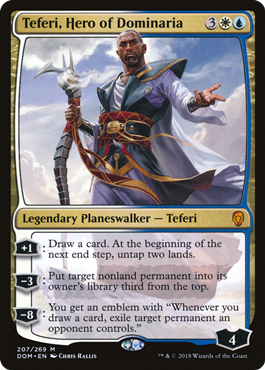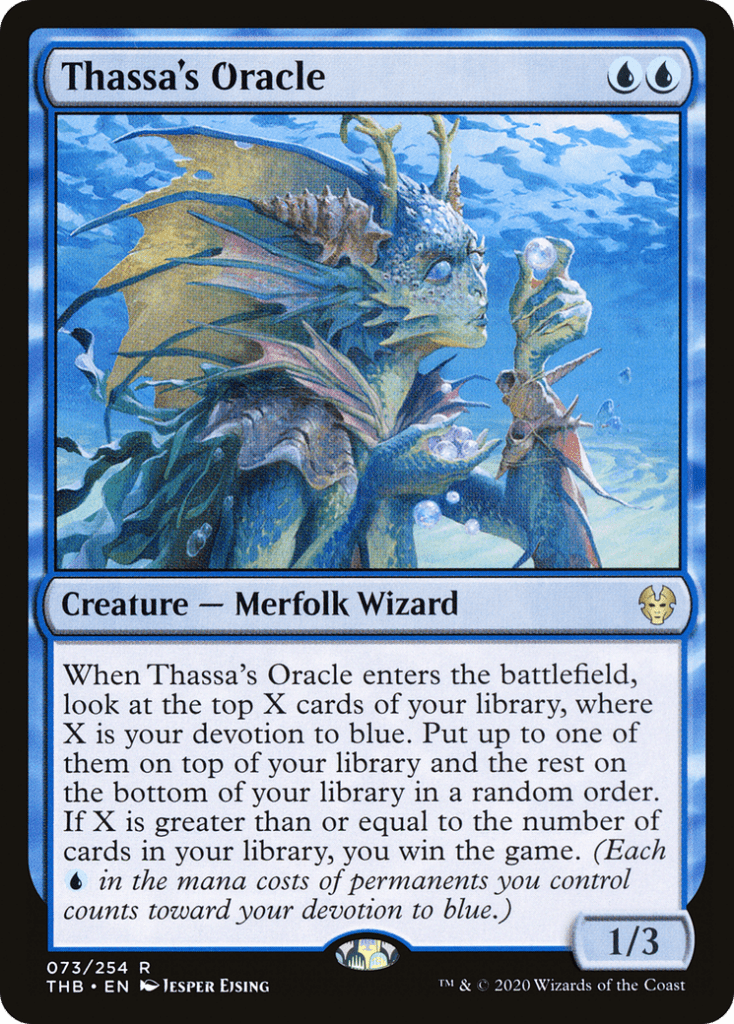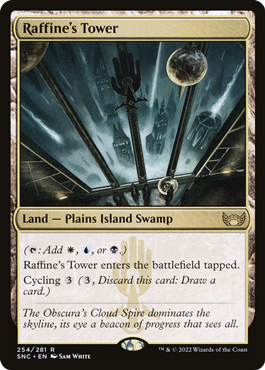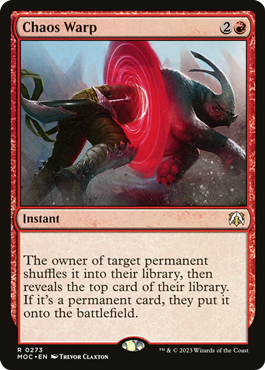What happens when some friends are looking to draft or get a Commander pod together, but Jenny’s out of town, Spike’s got to work and Timmy’s at his grandma’s birthday? You’re facing down three player Magic and you’re about ready to give up game night. Three can be an awkward number for Commander, after all — and unworkable for a traditional draft. But, in your heart of hearts, you each really want to play.
My philosophy is there’s never a reason to skip Magic if there are willing people at the table. While three players may seem like a tricky number, with a game as deep and customizable as Magic, the possibilities are truly endless. With that in mind, friends, here are five ways to play that work with solely three players.
Oathbreaker

Ironically, during the quarantine era of the COVID-19 pandemic, my group played a ton of multiplayer Magic — albeit virtually. Commander games fired most days of the week, but if we could only dredge up three players, we didn’t throw in the towel. Instead, we played Oathbreaker.
You can read Chris Cornejo’s article for a comprehensive breakdown of Oathbreaker, but the gist is that, in place of a legendary creature commander, any planeswalker (your oathbreaker) and a signature spell (an instant or sorcery) start in the Command Zone for this 60-card format. All cards must be within your oathbreaker’s color identity and commander tax applies to both it and your signature spell, respectively. The format also has its own ban list. Aside from that, the gameplay is familiar territory.
In terms of three-player games, Oathbreaker’s calling card is that its 20 starting-life totals scale well with one fewer player at the table. As a result, each instance of life loss or gain feels impactful, putting gameplay nicely between a 1v1 format’s chippy urgency and Commander’s mosh pit of threat assessments.
Almost-always accessible planeswalkers create ripple effects and need to be dealt with. If an opponent’s Calix, Destiny’s Hand is value-snowballing into one oppressive enchantment after another, for example, the need for your Sorin, Vengeful Bloodlord to reanimate some flying vampire attackers is paramount. Combat-focused Magic can take center stage in Oathbreaker, but with a fun, exigent wrinkle of having other combat-damage recipients.
As a counterbalance to the speed of a 20-life format, the gravitas of planeswalkers hearkens to the multiplayer complexity of Commander. Playing Oathbreaker with three players feels like a sweet spot in this regard. And now that Oathbreaker is an official Magic format, the time is now for your next three-player fête.
Wizard’s Tower
Maybe you’re looking to get more of a Limited fix. The Professor recently featured Wizard’s Tower on Tolarian Community College in all its scrappy, Texas Hold ’Em–meets–Winston draft glory. Just shuffle up nine booster packs plus 16 of each basic land type into a communal deck.
Players also share a graveyard and exile zone, and there’s one distinctive add-on: In the middle of the table are seven cards flipped from the top of the Library, which aren’t considered to be in any zone.
At each player’s draw step, they draw one card from this face-up pile, then one from the top of the communal Library, in that order. After deciding who goes first, players enact a free-for-all game of Magic starting at 20 life per player. If someone draws the last card from the face-up pool, the next player flips over the next seven cards, refilling it, and draws from that pool as normal.
Wizard’s Tower is a blast — with each player vying for the minimum-15 bombs from those packs. This color-agnostic format sees you playing cards you may have relegated to your sideboard.
For example, a couple friends and I simulated a quasi-Standard Limited experience by combining three boosters each from Neon Dynasty, Dominaria United and The Brothers’ War. My friend drew the eight-mana One with the Multiverse and mopped the floor with us using a card you otherwise wouldn’t include in a normal draft deck.
DMU inadvertently lent itself to each player’s five-color mana base, to boot. My other friend’s Territorial Maro swung as an 8/8 for the majority of that game. With more open information than a typical game of Magic, Wizard’s Tower also adds a strategically necessary dynamic of hate-drafting face-up cards, but you actually get to leverage them for bloody-fun wallops later.
Match Roulette
For the all-business competitive player, match-roulette is an exercise in exploring the meta of any given 1v1 format. As seen on Tolarian Community College’s inaugural “Shuffle Up and Play” gameplay-series episode, match roulette sets up a two-deck, best-of-three match. The loser of the first game cedes their seat to the player-in-waiting, who sees if they can’t one-up the first game’s winner with the loser’s deck. If they do, the first losing player plays the first winner’s deck to complete the match!
Tournament grinders play each other’s decks to explore, learn and even master their favored competitive metas out there. Match roulette allows you to pilot a fun array of decks and archetypes in order to get in the head of your opponents and get an edge when it really counts in high-stakes Magic. If you’ve gotten some runs in with Pioneer Abzan Greasefang, for instance, you’ll know when to disrupt your Greasefang, Okiba Boss–playing opponent the next time you take Izzet Phoenix for a spin.
And if there are three of you, not only does a third deck offer more nuts-and-bolts knowledge for how a deck across the table functions, but homebrews can benefit from some playtesting before you hit your LGS.
Say you want to revisit a Standard rogues build circa 2020 but beef it up for Pioneer play. Playing both the deck itself and your friends’ decks can give you insight as to where you might fortify your cardboard concoction — or if you have a diamond in the rough that you’re going to dominate with at Friday Night Magic.
Limited-Deck Pit Fighter
Remember all those unsorted commons and uncommons from your prerelease deck sitting next to your computer? How about that still-sleeved draft deck in your backpack? Besides the rares and mythics you’ve already windmill-slammed elsewhere, you know you’re not going to put those commons and uncommons in your Commander decks.
Before you trade this bulk in, you might as well get some more mileage out of it. Grab some draft lands and reassemble the deck for a little Pit Fighter.
A couple buddies named this three-person situation “pit fighter” at times when an eighth player had to bow out last-minute from a draft, no one else dropped and three-player games arose out of necessity. But it also pays homage to Kamahl, Pit Fighter and Odyssey block’s pit-fighting traditions. Ah, memories.
Moving past Pit Fighter’s draft-tournament context, though, my playgroup rare-drafts rares and mythics after each booster draft, but the remnants of our Limited decks remain intact — and largely still functional — for weeks at a time.
This has prompted me to wonder what could be if only those cards weren’t languishing, out of sight and out of mind. So, I vowed: Next time I built a particularly cohesive draft or Sealed deck, I’d keep it in my pocket for the next three-person occasion.
With rares/mythics removed, think of Pit Fighter as a Peasant/Artisan format. It rewards highly synergetic decks (i.e., you won’t have your rare/mythic pick-one bomb), so be sure the deck you keep in your pocket is of sound Limited deckbuilding, one you were proud to trounce other players with. I can tell you that proliferating poison counters with my Dimir All Will Be One Limited deck was all the sweeter with one additional opponent, baby.
If you’ve ever drafted a Conspiracy set, playing three-person Pit Fighter scales similarly to that multiplayer environment by virtue of playing 40–41-card decks and starting at 20 life — except you might not know what your opponents will bring to the table!
To make things interesting, à la Sealed leagues, each player can add cards from one booster from any Standard (or once-Standard-legal) set of their choice, play with the rares included, find synergies with their core deck, then take the rares out later. Or hell, keep the rares in there and make it a provisional three-player Sealed league. Just do what’s fun.
cEDH


cEDH may be the Commander boogeyman for many casual players, but hear me out: cEDH feels nicely scaled to three players, since its efficient builds and gameplay seek to get a win over multiple players at once within a matter of a few turns.
With explosive wincons and a generally devil-may-care attitude to one’s life total, the awkward feat of two players hacking away at each opponent’s 40 life is virtually nonexistent. Playing cEDH with three players offers up the same iterative play patterns as with playing a four-player game.
While this EDH sub-genre often sees a meta filled with pricy staples, the casual foundation of Commander as a whole offers a couple inexpensive ways to jump into cEDH. First, as long as you and your playgroup are all on the same page, you can proxy your whole deck. Who knows — maybe you’ll fall in love with one and collect the whole thing over time.
Also burgeoning is Pauper cEDH, or PDH — also recently featured on Tolarian Community College. With any uncommon creature eligible to be your commander and the restriction of solely commons in the 99, you and two friends can dip into the format for just dozens of dollars rather than hundreds. And with the format’s 30 starting life, it looks to be conducive to three-player play. Just be sure to to check out the banlist!
End step
So, next time you’re stuck at three players for a night of Magic, just lean into it. Like an architectural triangle or a rock n’ roll power trio, three stands as a solid gameplay option. Extra points if you make up your own three-player way to play, and let me know if you have a favorite I missed over on Twitter!

Alexander is an MTG graveyard kid with degenerate aspirations. When he’s not playing Commander, cubing, drafting or squeezing in a Pioneer or Modern match here and there, he might be found writing fiction or playing in his punk band, Filth Lords. Besides Magic, he’s also a freelance A&E journalist




